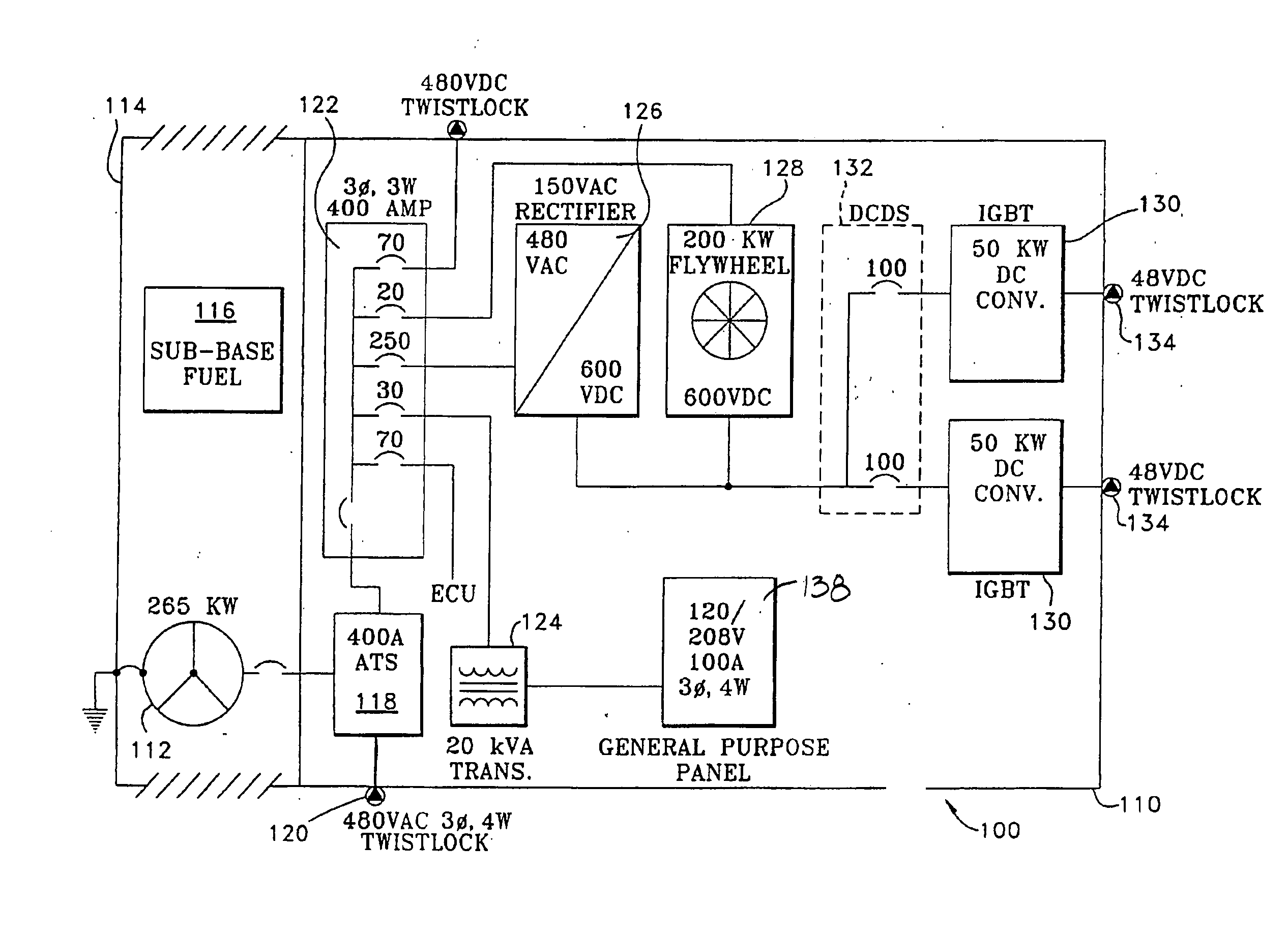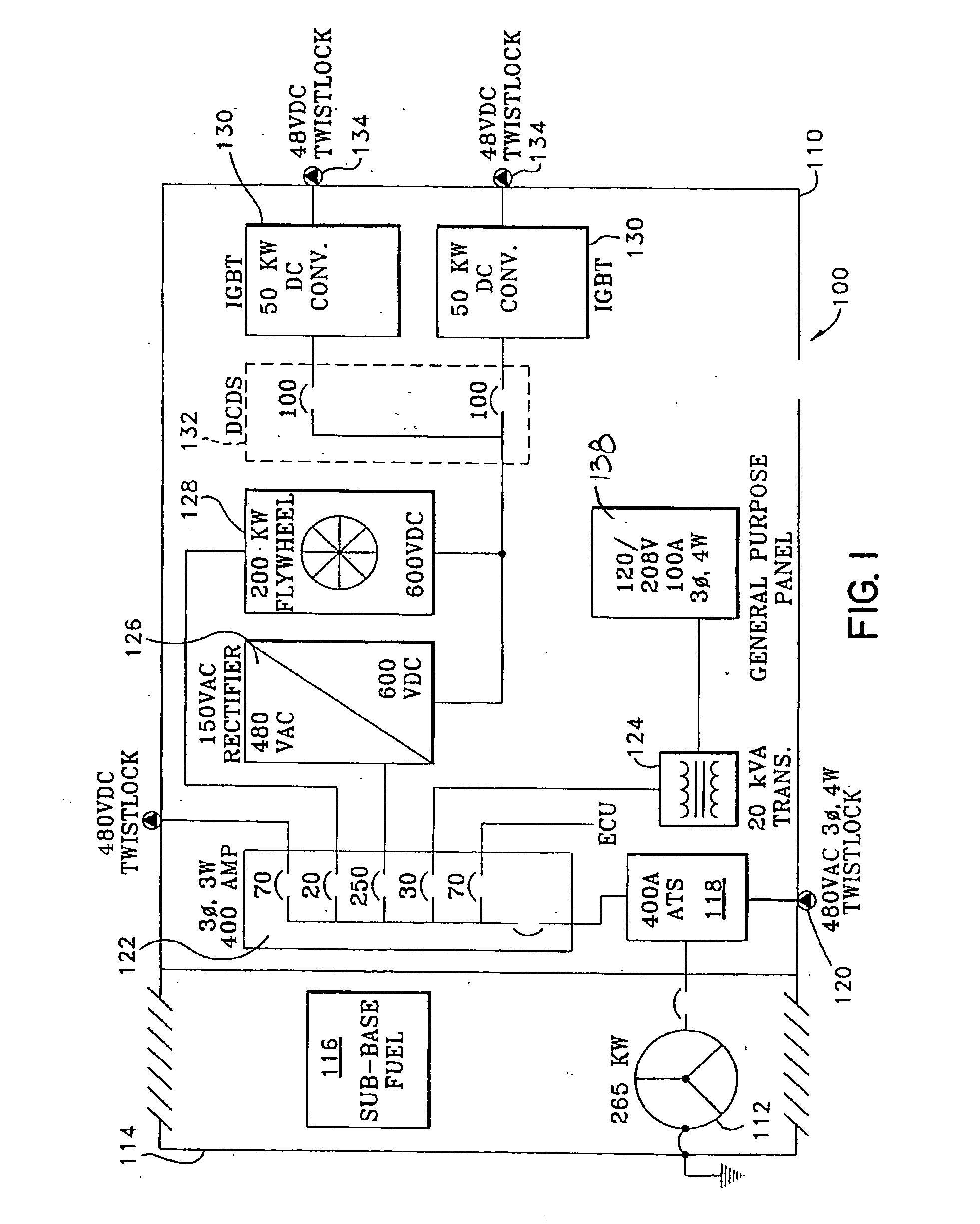Apparatus for providing high quality power
a high-quality, power-generation technology, applied in emergency power supply arrangements, electric generator control, instruments, etc., can solve the problems of safety risks, bulkiness and expense of distributing ac power, and inability to meet the needs of ac power supply, so as to reduce the number of wires and the current needed, reduce the inefficiency of smps, and reduce the effect of wiring circular mills
- Summary
- Abstract
- Description
- Claims
- Application Information
AI Technical Summary
Benefits of technology
Problems solved by technology
Method used
Image
Examples
Embodiment Construction
[0025] The present invention overcomes many of the prior art problems associated with power supplies. The advantages, and other features of the system disclosed herein, will become more readily apparent to those having ordinary skill in the art from the following detailed description of certain preferred embodiments taken in conjunction with the drawings which set forth representative embodiments of the present invention and wherein like reference numerals identify similar structural elements.
[0026] Referring to FIG. 1, an enclosure 110 is utilized to protect the system 100 from the elements as well as provide the proper internal environment necessary for the component pieces to function properly. This environment is preferably 40-104 degrees F., non-condensing. In a preferred embodiment, the enclosure 110 is an ECOBAY™ enclosure available from Sanmina-SCI Corp. of 2700 North First Street, San Jose, Calif. 95134. The system 100 is designed to be stationary or fixed. The enclosure 1...
PUM
 Login to View More
Login to View More Abstract
Description
Claims
Application Information
 Login to View More
Login to View More - R&D
- Intellectual Property
- Life Sciences
- Materials
- Tech Scout
- Unparalleled Data Quality
- Higher Quality Content
- 60% Fewer Hallucinations
Browse by: Latest US Patents, China's latest patents, Technical Efficacy Thesaurus, Application Domain, Technology Topic, Popular Technical Reports.
© 2025 PatSnap. All rights reserved.Legal|Privacy policy|Modern Slavery Act Transparency Statement|Sitemap|About US| Contact US: help@patsnap.com



